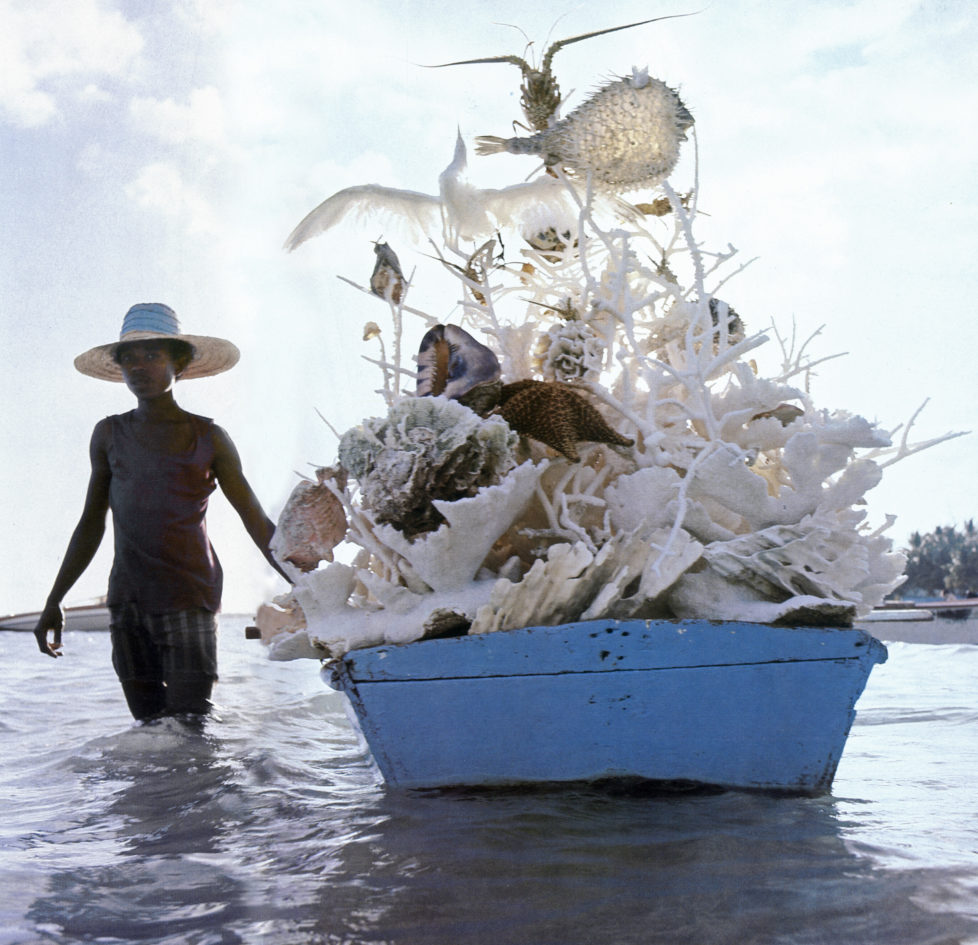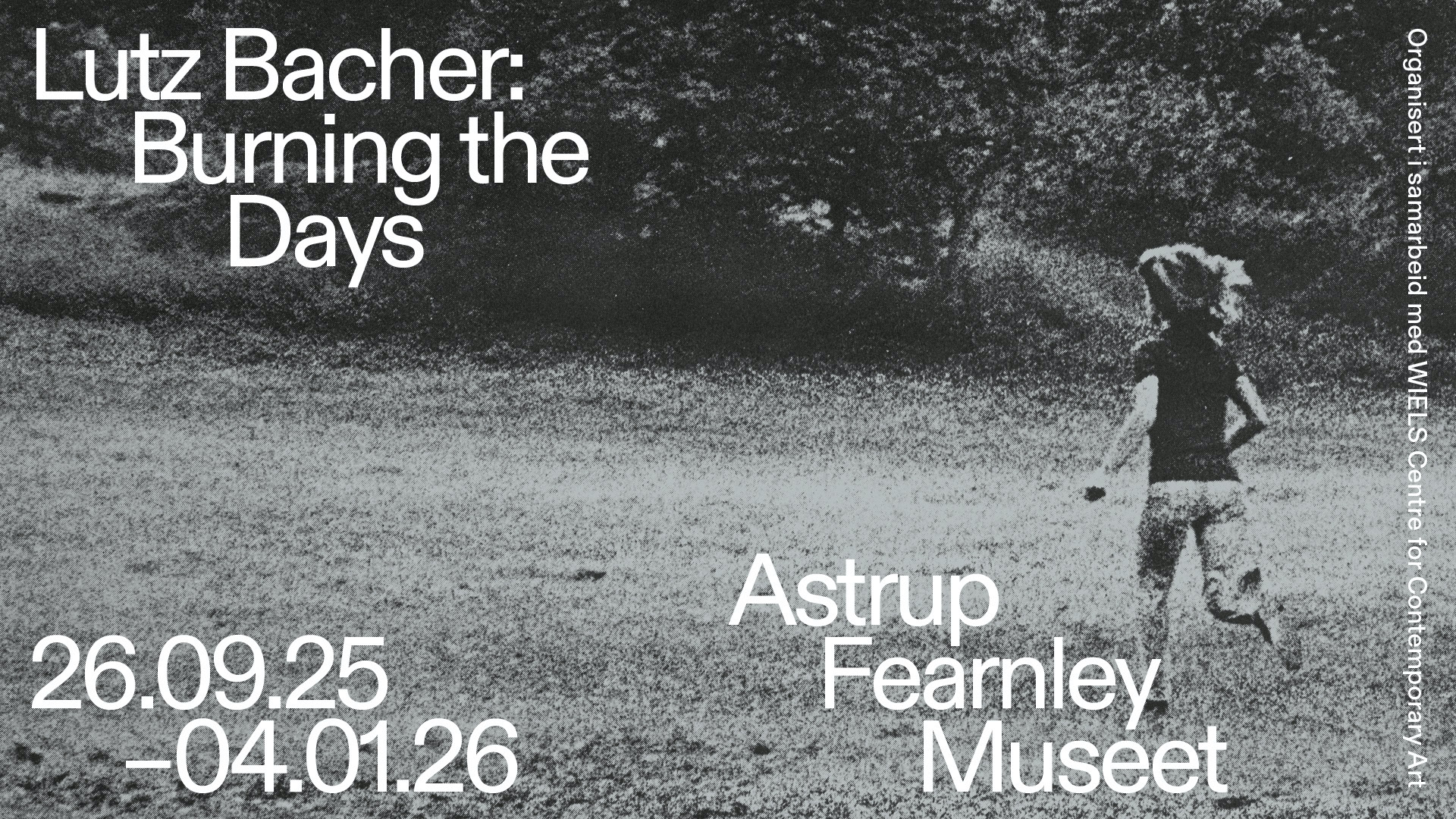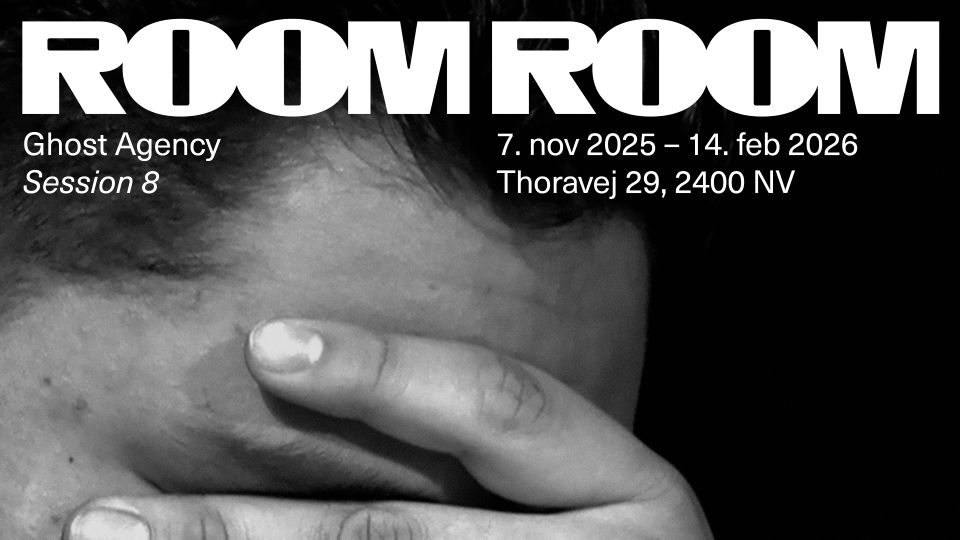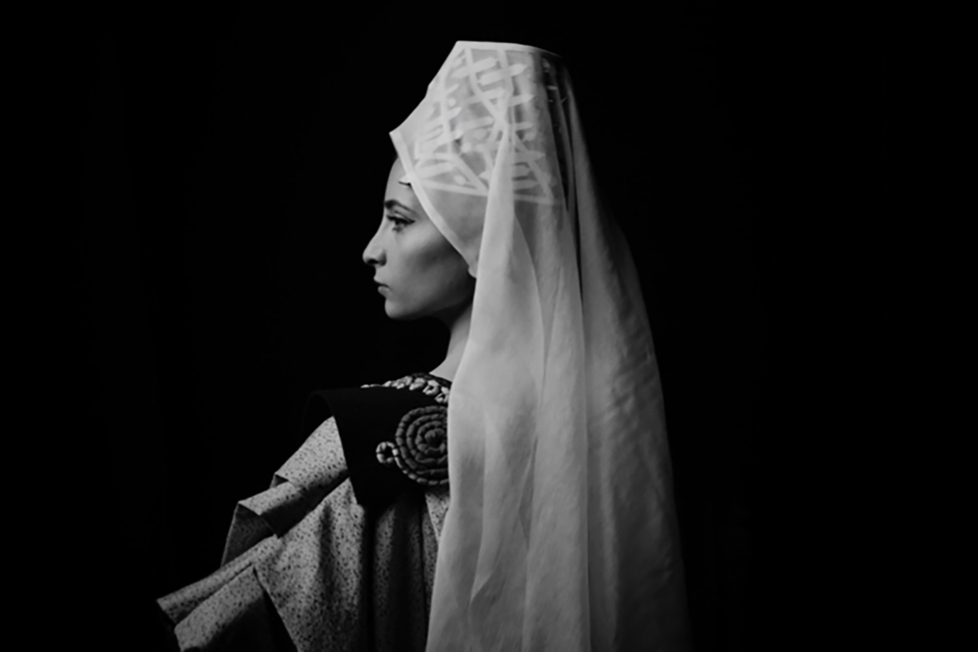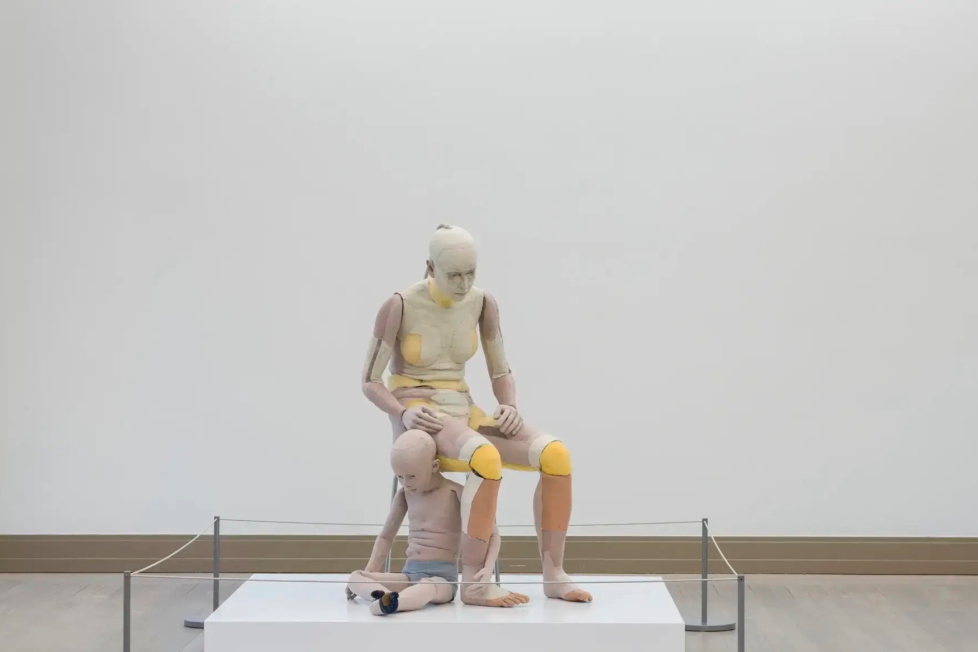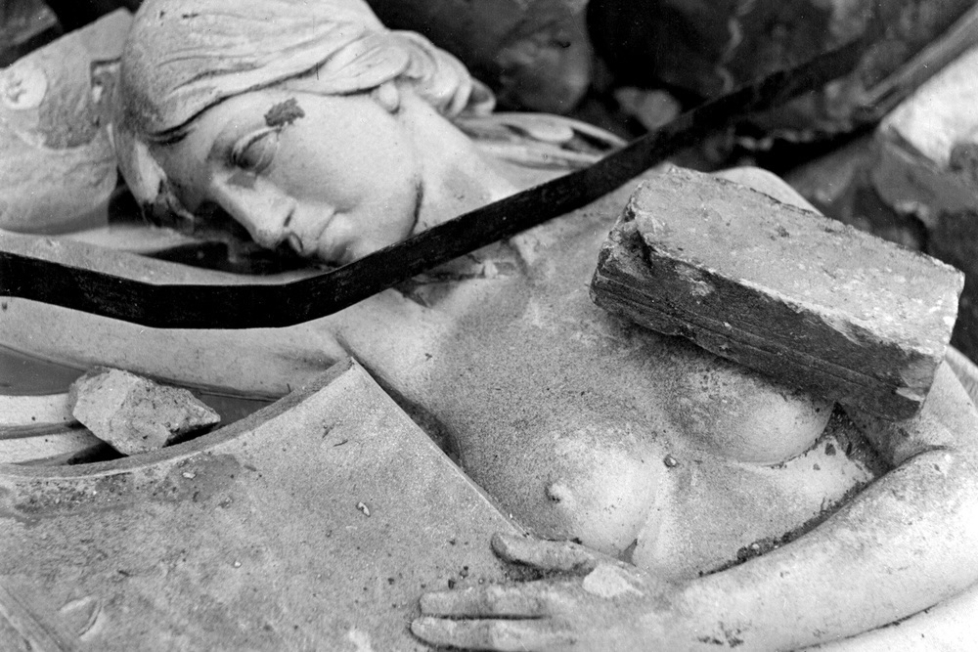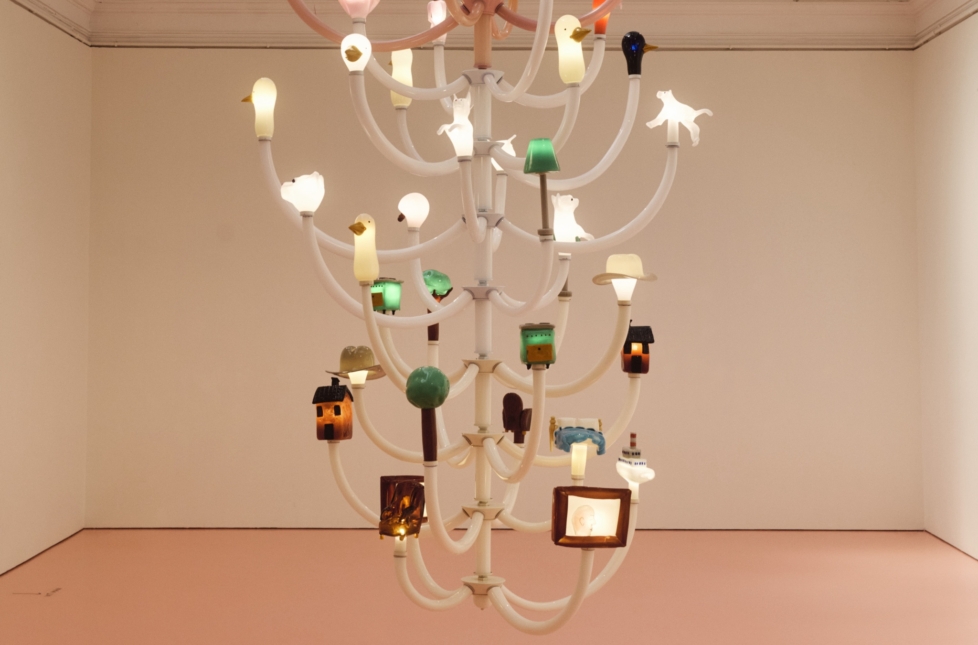
He makes a good icon, Hubert Fichte: a fine bearded man with a voluminous mane and a gaze both disarming and inquisitive. He’s depicted in a row of photos and paintings along the wall to the right as I enter Love and Ethnology: the Colonial Dialectic of Sensitivity (After Hubert Fichte) at Haus der Kulturen der Welt (HKW) in Berlin. Hubert Fichte as a child actor in Hamburg. Hubert Fichte portrayed by the painter Serge Fioro. Hubert Fichte in conversation with Léopold Sédar Senghor. In the adjacent headphones I can hear Hubert Fichte read from his novel Forschungsbericht (Research Report, 2005). A partition wall adorned with a photo collage of book spines and handwritten notes suggests that I am in an archive. Material that documents the life and work of Hubert Fichte is presented on boards and standing tables, in vitrines, and in sound and video installations. Occasionally, I run into slender signposts boasting snippets of Hubert Fichte’s novels. The exhibition title has him in parentheses, a more modest position than he actually assumes. We can’t move any further before we’ve raised the obvious question: Who the hell is Hubert Fichte?
In Germany, he seems to epitomise 1960s counterculture, as a kind of beatnik who wrote anti-bourgeois Heimat literature from the local pubs of the port city Hamburg. He had a Jewish father and was born at a time when ‘Half-Jew’ was a perilous stigma issued by the state. He came out as gay at a time when the penal code still considered homosexuality an offense. And yet, until he died of AIDS in 1986, Fichte spent his entire adult life in partnership with the female photographer Leonore Mau, who was many years his senior. Together they made multiple journeys in Africa, America, and the Caribbean, which resulted in reportages and book collaborations, aside from Fichte’s unfinished novel series of Proustian proportions, Geschichte der Empfindlichkeit (History of Sensitivity). Published posthumously in nineteen volumes between 1987 and 2006, the work comprises not only novels but also essays, interviews, and radio plays, partly with an ethnographic foothold in the religion and art of the African diaspora in the Americas.
History of Sensitivity is infused with a utopia of sexual brotherhood, a Gay International exercised through transcultural cruising, in step with Fichte’s idea of homosexuality as the world’s oldest revolutionary movement. Autofiction meets ethnography in the staging of Jäcki (Fichte) and Irma (Mau), who actively transgress corporeal and cultural boundaries, accompanied by relentless self-scrutiny and questions surrounding the limits of transgression. In Fichte’s avant-garde ethnology, the interest in the colonial other is always mixed with desire, while experimental writing becomes a means to acquire knowledge. It’s this work that makes the point of departure for Love and Ethnology.
In collaboration with the Goethe-Institut, HKW has initiated six exhibitions that echo Fichte and Mau’s transatlantic movements. Commencing in 2017, each exhibition venue has provided an artistic and critical response to a translated excerpt from History of Sensitivity, a gesture that the main curators, Anselm Franke and Diedrich Diederichsen, have coined a “restitution” of the colonial gaze. Following exhibitions in Lisbon, Salvador da Bahia, Rio de Janeiro, Santiago, Dakar, and New York, all of which are documented on six large boards in the foyer at HKW, the people involved are summoned to a concluding exhibition and conference. This focus on Fichte, a white European, even a German, combined with an exchange that goes from the centre to the periphery and back, may be taken as an invitation to exercise institutional (self-)critique within the place that calls itself the House of World Cultures. Ostensibly, the idea is that engagement with Fichte’s work can trigger more overarching questions concerning avant-garde and appropriation, postcolonialism and canon. But in due consideration for the (many) uninitiated, it’s apparently necessary that Fichte first be built up to a towering figure. And so, what has come from the periphery tends to stay in the periphery.

On that note, let’s hark back to the show’s somewhat reverential bent. The exhibition has devoted a lot of space to positioning Fichte, placing him in traditions and ranking him shoulder to shoulder with more famed specimens of his contemporary avant-garde. Miscellaneous archival materials and period documents are juxtaposed with older and newer artworks that resonate with Fichte’s thematic and cultural interests. Some explore so-called “parallel figures,” as in Lili Reynard-Dewar’s two-channel video installation Rome, 1st and 2nd November 1975 (2019): a re-enactment of the last day of Pier Paolo Pasolini’s life, paired with staged conversations where Pasolini is played by multiple actors, in gliding transitions between genders and languages. There are works that address the political reactions to the AIDS crisis, such as Isaac Julien’s video This is Not and AIDS Advertisement (1989) and Philipp Gufler’s multimedia installation Projektion auf die Krise (Projection on the Crisis, 2014). Kader Attia’s Reason’s Oxymoron (2015), which consists of filmed interviews with philosophers, psychiatrists, anthropologists, and healers on the disparate conceptions of the psyche in West-Africa and Europe, has been brought in as a companion piece to Fichte’s musings on related topics. In keeping with the vogue of his time, Fichte’s transgressive pursuits also ventured beyond the delimited, bourgeois ego, which elicited an ambivalent fascination with trance rituals and shamanism.
Of the works that have come about in direct response to the translations central to the project, the Brazilian Coletivo Bonobando’s playfully irreverent installations quickly grab attention. Flashy human-sized phallic costumes with heads of gleaming velvet and ruffled testicles are propped up as the sculptural remnants of a series of street performances in Rio de Janeiro which are also documented on video. Alongside these giant penises we find Hubert Fichte in the form of a ventriloquist’s dummy perched on a drum. The constellation suggests that Fichte was prone to regard the colonial other as a walking penis, while it also hints at how the artist group regards Fichte: as a marionette. In gold frames on the opposing wall are mounted three relief butts with buttholes and headphones luring the viewer to a peep show. Peek inside to find looping videos that intersperse soldiers marching the streets of Brazil’s military dictatorship with sequences of gay soft porn accompanied by a voiceover reading an excerpt from Fichte in Brazilian Portuguese with English subtitles. With humorous immediacy Coletivo Bonobando manages the balance between a critical response to and affirmative continuation of Fichte’s radical project. Let’s not forget that Brazil recently has seen the return of a quasi-fascist regime carried forth by homophobic undercurrents. In Love and Ethnology, HKW does what it often succeeds in, which is to enrich archival material with prophetic power, and steep engagement with the past in a feeling of topical urgency.
Indeed, there’s no shortage of curatorial reasons for this exploration of Fichte’s work. One argument is that his work embodied perspectives from theoretical schools that are well-established today, but that it did so before these schools were theoretically conceptualised. Fichte’s approach was arguably imbued with postcolonialism, intersectionalism, and queer theory without having any of these vocabularies at his disposal. His work sprang from an experiential praxis that reflected on unequal power relations as well as his own inclinations towards essentialism and exoticisation. A radical hermeneutic sensitivity, conveyed through body as through language, went hand in hand with a critical reflex that steered clear of a metaphysics of presence. All good. But because up until now, History of Sensitivity has received hardly any attention, the whole thing comes across as an introduction – and the building of an icon – rather than an interrogation of the problems at stake. And so, we are left pondering whether there might be better ways to tackle postcolonial issues – ways that could allow the experiences of colonial subjects to emerge on their own terms.
